Tell us about yourself. What’s your day job, country of origin, languages you speak, background in photography.
Hello! Talking about myself is always a bit overwhelming, My name is Stephanie Baer (@stalagmitethrilla) and I’m 37 years old so, there is a lot to say. I’ll just jump into the day job; I am a risk manager for a local credit union. It’s my job to make sure all our members’ financial deposits are safe and sound within our care as they use the financial system. It’s a data driven and highly regulated environment. I love my day job!
I am currently in McKinleyville, California. Which is the tip top of California, or Humboldt County/Emerald Triangle. I was born in Basingstoke, United Kingdom. My father was in the Air Force, so I had the opportunity to go to school in the UK, and I plan on visiting again. I currently only know English as a full language but took Spanish in high school/college so I can read and understand enough to get by. My mother is 100% Portuguese and speaks the language, so I know the words that she used to use when I would get into mischief as a kid.
As for any background that may pertain to why I like photography, I do not have any. I come from a world of law enforcement and dairy farmers. However, I have always loved the way comics, cartoons and the world look as interpreted by our own imagination. I was the creator of games for my siblings and friends, so in a way my mind has wanted to show how I see the world. Also, I am a mom, I have two beautiful kids and could not be happier with my little family.
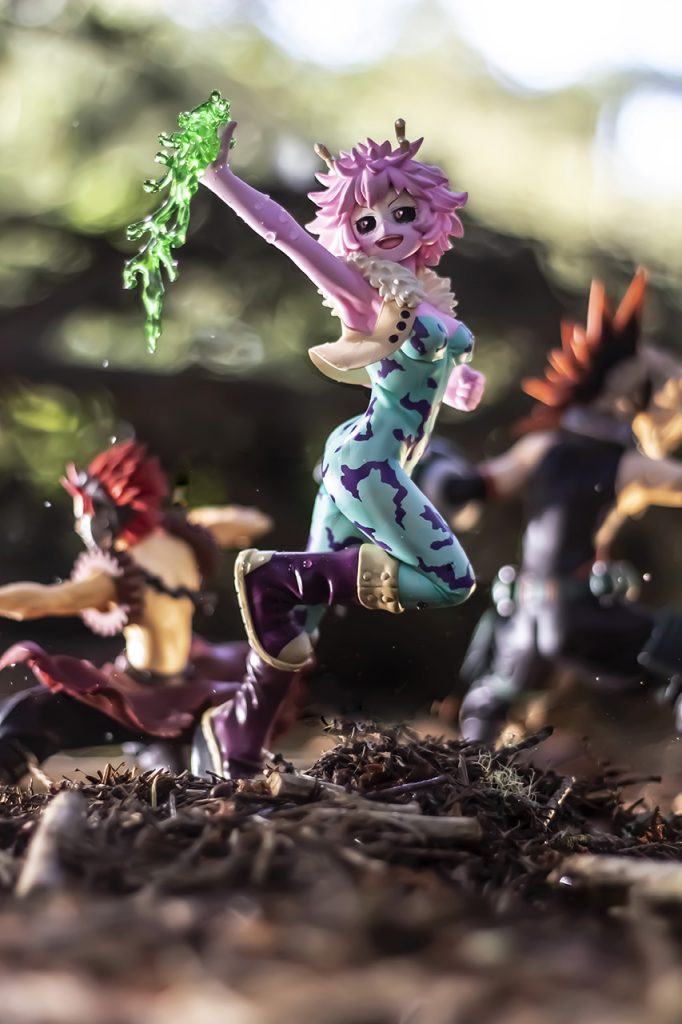
How long have you been a toy photographer and what attracts you to this hobby?
I have been on Instagram since 2015. As far as taking photos, I have been with a camera since high school. I never knew what I was doing nor had the maturity to stop and think I had a talent for it—the photos were of past boyfriends, outings and other random memories that have no significance on this medium today. So, 2015, that will be my marker for when I discovered and thought the hobby was something I could do. As for what attracted me to the hobby, I think the saying “I was a collector first” is relevant to me. I have always loved ’90s entertainment, and just that time in my childhood I feel had the most impact, so getting to photograph items of wonder or whimsical fantasy was a win. What really attracts me is that I am able to take what I feel for an object, whether it has to do with a real memory or just that I like the color and translate that to a fixed and permanent imprint somewhere. Photography is the tangible interpretation of my feelings.
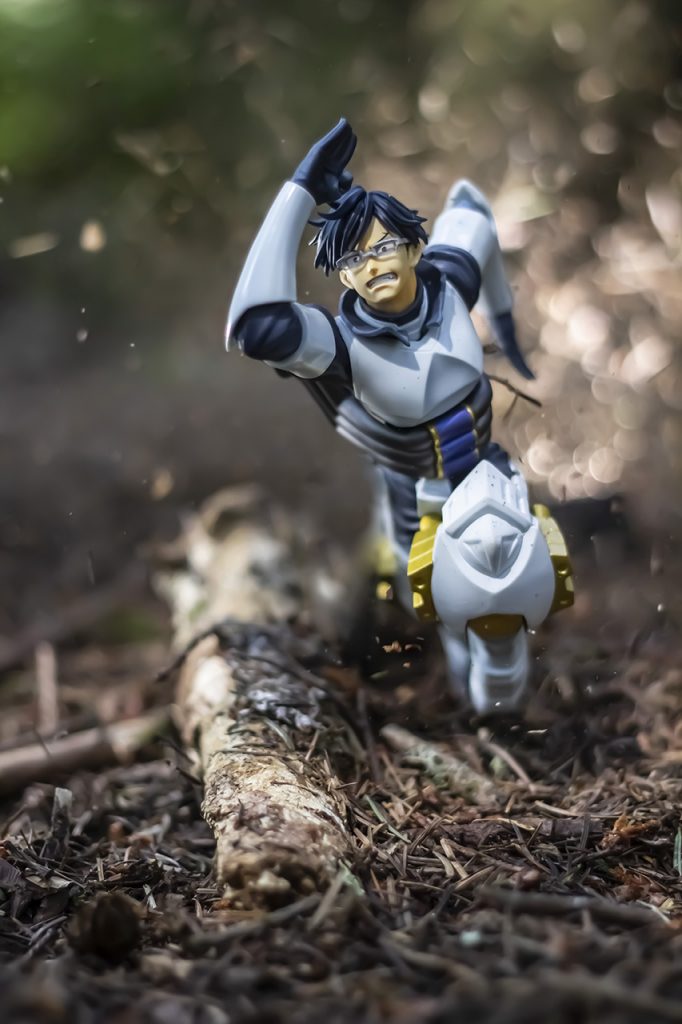
Where do you get your best photography ideas?
The best ideas come from chances. A walk in the park and you see some little dog fall over in a particular way or even a bad day at the office. I tend to have an overload of ideas and will try and jot them down in a notebook. However, some of my best and favorite photos come from being out in the wild, toys in hand and you happen upon a light, a tree or just breathed in enough to give your mind a chance. I have a photo of Carol from Where the Wild Things Are that was achieved really just by chance—I walked into an area with falling yellow leaves and I had been talking with a friend online about the figure. The chance came about and a great idea was created.
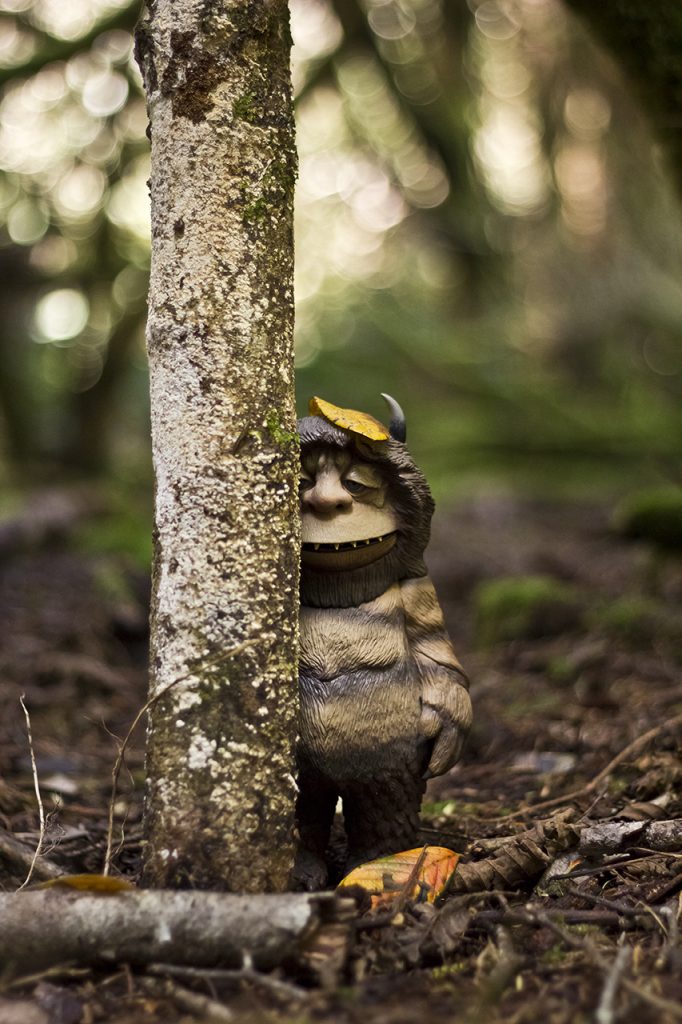
Tell us about your process in creating images from original thought to final photo image.
It’s funny this question pops up so often, how does anyone really explain how their day went from start to finish? Do you care if I had different coffee or a different play list that day? What if my kids were sick and I missed my regular time for shooting and had to adapt to indoor versus outdoor? I think in reality the process of just getting in the mindset to take an image is the start. I like to spend an hour choosing figures to take with me. I have a backlog of ideas I want to work on and I’ve found my greatest adversary in the creative process is time. Will I have enough time to set up what I want, get the right angle? Do I need to move five feet to get light and so on. Once I know what figures I’m using, I can start to think where I want to shoot. Since I live in an area where there are a lot of state parks, it’s nice to get the natural scenery, but I shoot by myself and being solitary can sometimes create unwanted encounters. In order to balance what I want to create, my own safety and the environment, I have a few select locations I frequent. Maybe one day at a Toy Photographers safari I can feel comfortable to shoot at unfamiliar location, but for now the location adds to my process. Once at the location I choose, with carefully selected figures and a coffee.—I always need coffee for a perfect image—I lay out all my equipment and then sit to watch how the trees move and where light falls. This is usually in the afternoon as I have to say again, time is not on my side. On average I have 3 to 4 hours to take an assortment of photos for the month or sometimes for the next few months.
The set up of a photo is relatively painless. The figures fall—yes, is it kind of frustrating, absolutely, but you have an idea and can place the figures in the location. The process of shooting however can be much more complicated. I am a simple photographer. I like a good bokeh and some cooler toned photos, but to get that effect at 3 p.m. with full sun can be a bit tricky. This is when you need outside lighting to direct shadows and trees to dilute the direct light. But this is getting off track, I guess what I want to say is that the actual magic, or process, has a lot of variables and it’s not as magical as one would imagine. And after I take more than 300 images of the same figure standing in the place—but with every F-stop setting and ISO combo I can think of—then you get a feeling of success. Then you go home place them on the computer and feel like you accomplished nothing as all the images once enlarged onto Photoshop do not carry the same delight they did on the camera screen. However, there is a bit of noise clean up and maybe a little cyan lean in on Photoshop before I post to my account.
What photography editing software do you commonly use in your image creation and how does it help you express your ideas?
I use Photoshop and I feel like the colors I capture sometimes are not as intense or ideal as to the ones my eyes see. So, I tend to lean into making my photos cooler and upping the cyan colors. I have recently tried to add a warmth in my photos, but that is a definite discomfort that Photoshop can add later. I am by no means an expert, but I can layer and do some little tricks that can better my photography without causing a disconnect with my original idea.
What is your current equipment set-up and why is it your favorite?
I own a Canon T7i with a 50mm lens. I recently upgraded my camera and I notice the difference in that I have additional clarity when I shoot, but I do need more lenses.
A photographer’s equipment isn’t always just the camera and lenses. I carry an array of items for almost all my photos. This includes three panel lights and a Litra cube. I also have collected several selfie-sticks to hold lights/my phone for recording behind-the-scenes. I own two tripods, an Amazon special and a Platypod. The Platypod is helpful for many of my shoots and keeps the camera shake to a minimum. I recently picked up a backpack and a cotton carrier to try and consolidate my equipment as it gets heavy hauling all the items around on trails.
I think my favorite equipment is my camera and I love a Canon, haven’t shot with any other brands, but I know my camera and its settings without looking and that makes it an extension of me!
Tell us your favorite photography environment (indoor or outdoor) and why it is the place where you like to create your best work.
My favorite photography is definitely outdoors. The wide-open space with unlimited options for a creative mind is just the start. Overall though, it’s where I find myself at peace enough to take a photo. I find indoor photography difficult and restrictive.
What are the essential tools in your toy photography arsenal, and what might we find surprising in your tool kit?
Essential tools are my panel lights, paper clips, poster tack and potato flakes. I think most of these items are normal nowadays for photographers. However, I think the need for a good paper clip is key when a stand just isn’t working. I used to bring a soft towel to rest my camera on when shooting at ground level, but now I have my Platypod.
What kind of reaction are you looking for from your viewers?
This is a tough one. A reaction from someone anonymous maybe just to notice the image I created and enjoy it. For my everyday viewer, I always want to surprise them, show them a different emotion or image. I cannot be stagnant, and I think that shows in my collection as well as my creative outlets.
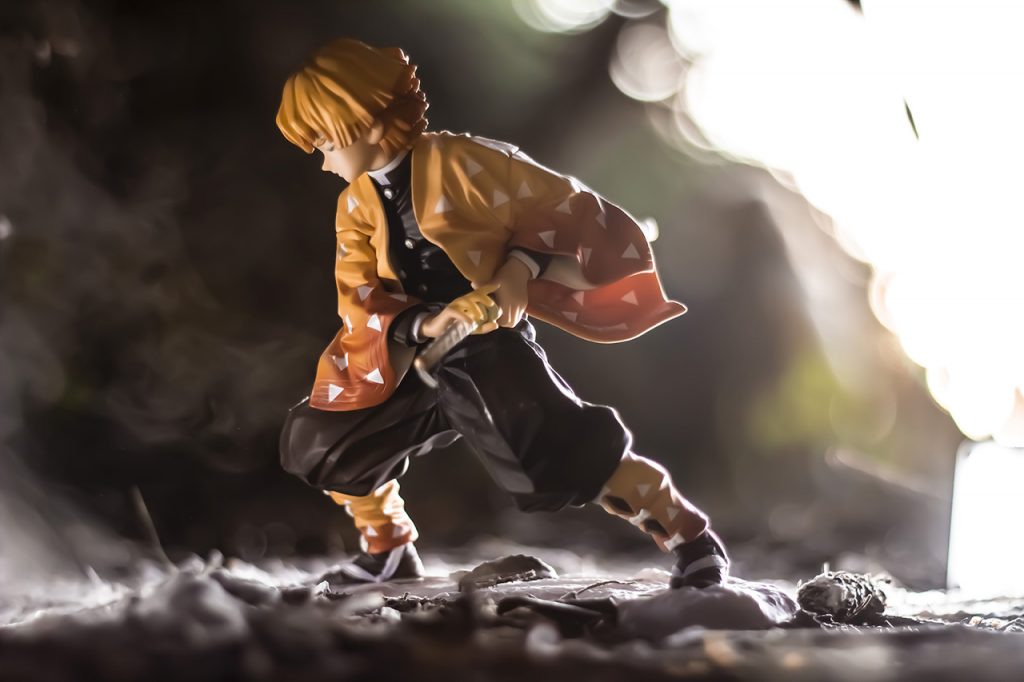
What has been your most treasured feedback?
I think the feedback I get from those wanting me to push myself is the best. I have a good friend Mariana, @creationodyssey, and she isn’t afraid to tell me when my work is lacking or not right. It’s more helpful feedback where the person gets you and your concepts.
Toy photography can present some unique challenges. Tell us about some of your more memorable ones and how you have overcome them.
This is an interesting concept as well, what is a challenge to one is not a challenge to another. Since I have been doing this for so long, a person can forget the first few challenges. The idea that you can add flying debris, eliminate a stand, get an outline of light around a figure, etc. I remember the first time I used wire; the shot was a spider web of disasters.
I remember tying it all up from one branch to another, took me two hours to get one Nendoroid to be “in flight”. That figure must have spun, fell and lost its pieces more times than I could count. Then, once you take the photo, you must edit out all the wires. Just a mess! The photo is still one I will go back to and think … I could do better, but this isn’t bad.
After learning all the in-camera challenges, you get to move on to the next level of creative challenges. I think the unique idea, that you need to have a new idea and that new idea needs to come before others, can spin out of control quickly. Social media puts on a lot of pressure, so to overcome this I always take the time to really enjoy others posts. I try to note something of interest to my eyes. Good examples are a branch/nature piece, a pose or just the emotion of the figures used. All are important and a lot of us don’t realize the part we play in helping each other overcome challenges. Community itself is a challenge.
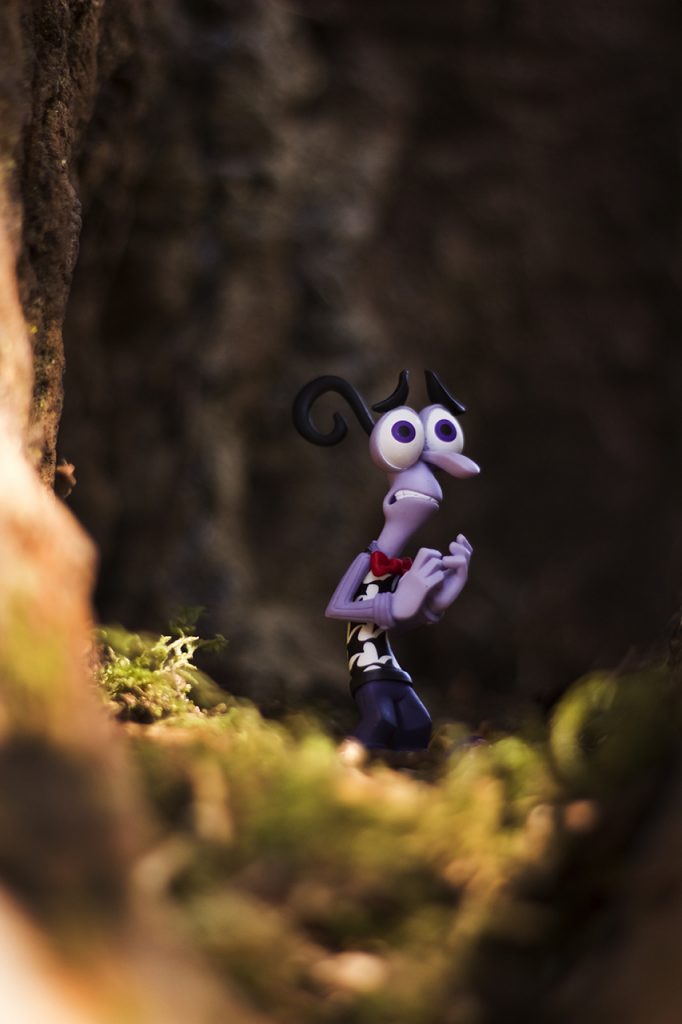
There are a lot of toys out there to choose from to photograph. What is your favorite toy line and why?
Goodsmile Nendoroids are my favorite. I collect a lot of different toy lines, but Nendoroids are my absolute favorites. Their design is eye catching and the multitude of characters makes collecting them all that much more inviting. They come with plenty of accessories and they are really cute.
What is your favorite toy photography-related memory?
I had a meet-up with three toy photographers in Los Angeles. I can truly say that meeting another toy photographer in person and sharing the experience of creating a photo together doesn’t get any better. And even if I get to meet so many more photographers, the first few who you get to experience that first time collab with are just something special.
What are some common mistakes you see in other people’s images and lighting set-ups?
Some common mistakes I see are people doubting themselves or not taking enough time/photos to capture what they really are after. Take a breath. As I go along my own photography journey, I’ve learned that pointing a light directly at a figure’s face is not correct and that we have more control in a natural environment than we think. I know we all are not in the business of making money on this hobby and I think its important to also stop and really look at our own work. It’s easy to cast stones at another’s house (that’s not the quote).
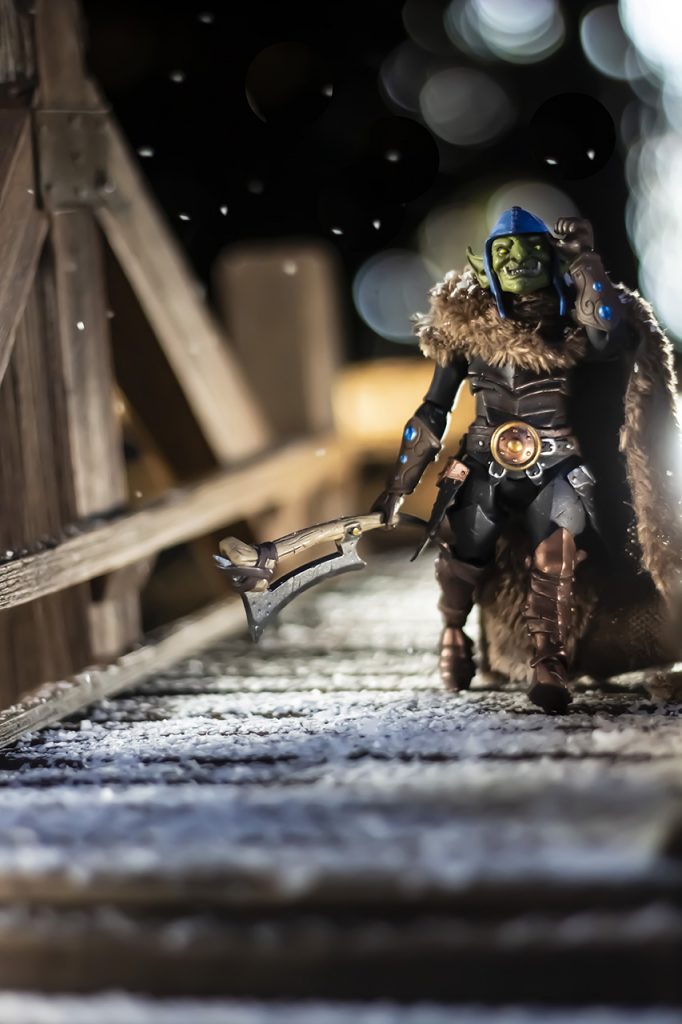
Who are your greatest influences – toy photographers or otherwise?
The start of my toy photography journey I will always attribute to Kyleigh, @captaindangerous. Her imagination helped a lot of us soar. But as far as inspiration and other types of concepts, I can attribute my outdoor photography love to Emma, @orukukarai and Dave Towery, @bear__trap (then @davestillshoots). There are so many amazing photographers and different styles, but for some core work, I would always go back to the three of their pages.
Nowadays I look at images from the medium the figure comes from and even fan art of the related show/movie/comic. A lot of my inspiration comes from childhood memories or found moments in my life.
Your work is fantastic but everyone has to start somewhere! If you could go back in time and talk to your young self, what would you make sure you knew on day one of your toy photography journey?
Not to touch the damn vibrance in Photoshop. Ugh, my eyes hurt looking back through my page. I needed to know that blowing out the colors in a photo didn’t make them better. I could shake my noob self.
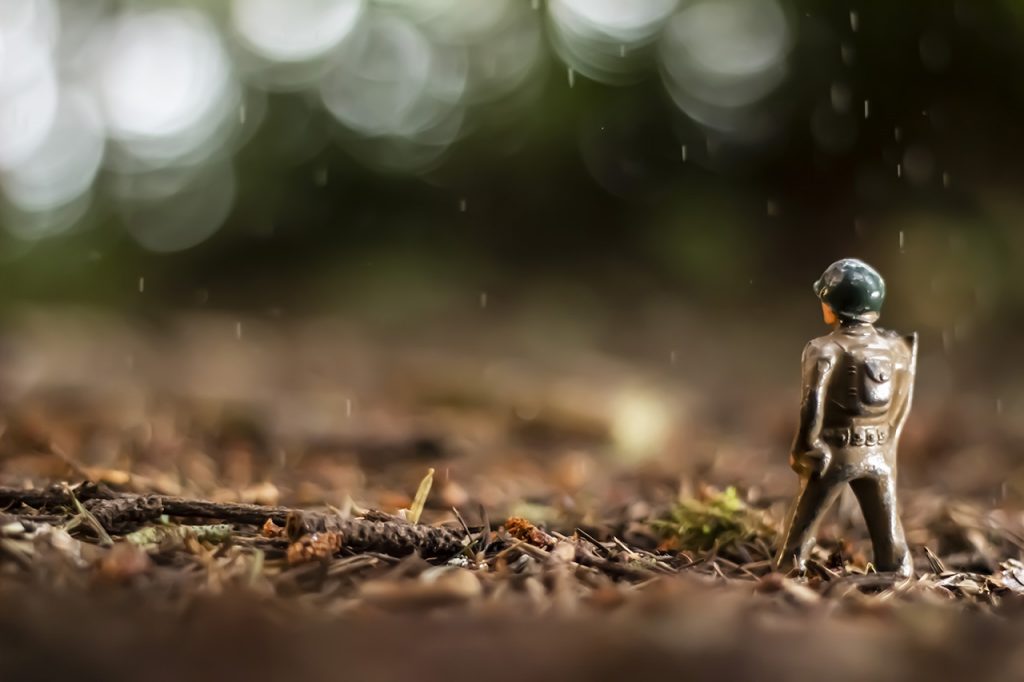
What are the most important tips that a new hobbyist should know if they are interested in pursuing toy photography?
Be yourself. This isn’t a “hang in there” kitten poster, but once you start to take photos to imitate likes or other types of scenarios that aren’t for you, then your account will slowly become work and not a hobby anymore. Have fun with the photography, learn and ask questions, but please be yourself.
What is your greatest toy photography achievement?
For me continuing to go on and take photos is an achievement. I have seen too many friends come and go. I love the art form and would still post/take photos without others seeing them.
I also think that starting my own YouTube experience alongside my good friend Scott @fstop_rebel is an amazing undertaking.



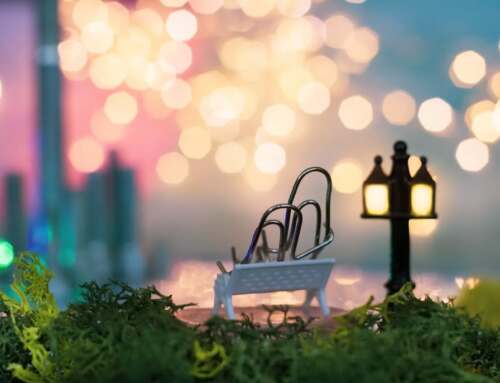
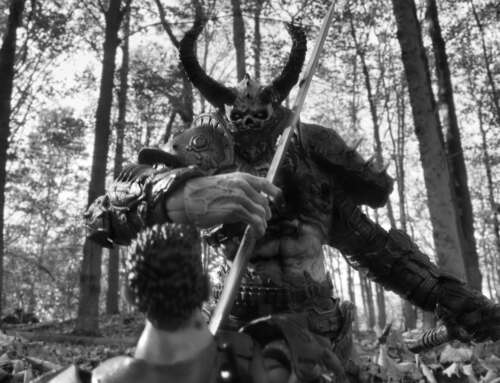
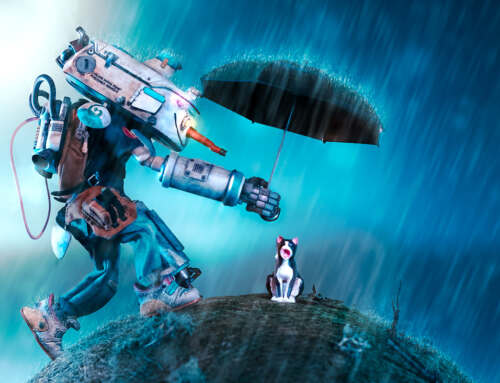
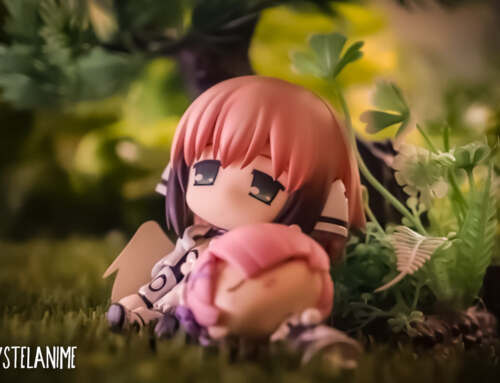
Leave A Comment